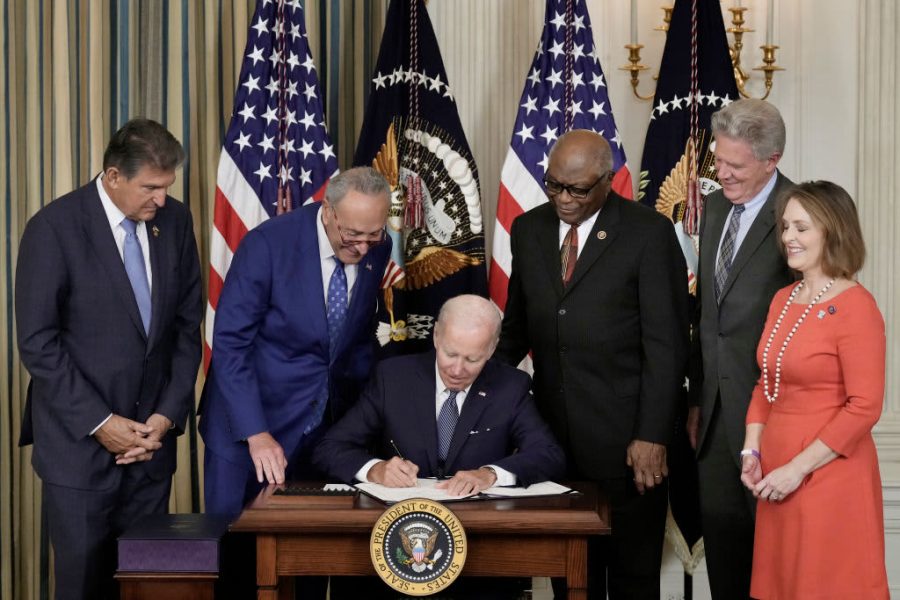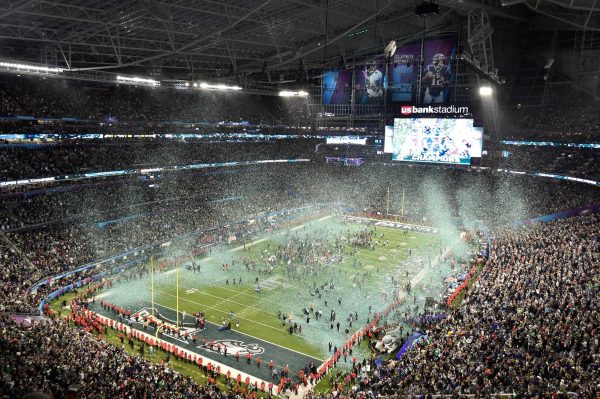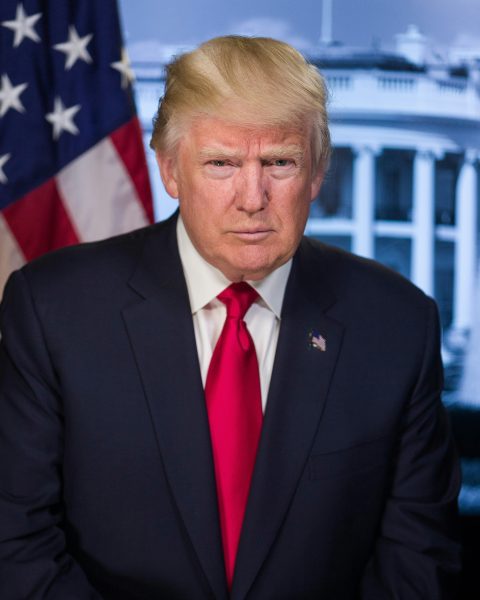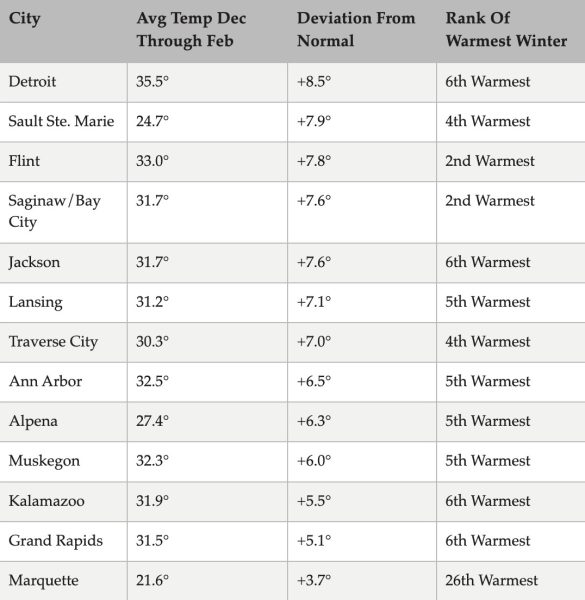New Climate Legislation: Good or Bad?
https://www.cnbc.com/2022/08/24/inflation-reduction-act-could-cut-climate-damages-by-1point9-trillion.html
Finally, after 30 years of delaying climate action, the U.S. government passed the Inflation Reduction Act on August 16, 2022. last November I published an article covering “The American Jobs Plan”; Biden’s first attempt at a two trillion dollar proposal that would rebuild infrastructure and promote the economy while incorporating historic climate action. Similarly, the recent law contains a clean economy transition that commits to cutting greenhouse gas emissions from their peak—about 40%—by 2030. Since the United Nation’s findings state that we have to cut global emissions in half by 2050 in order to prevent temperatures from rising past a disastrous 1.5 degrees celsius (from the 1800s), this law is monumental for reaching that life-saving goal.
For young adults, such as Berkley students, the application of this law in our daily lives could look like innovations at home (electric stove, natural gas heater, solar panels on roof), many kids driving electric cars, and lots of financial gain. For example, by the time we have to afford our own living, if instituted, the new climate technologies could save you $1,800 a month on utilities. Although the Congressional Budget Office (CBO) admits the bill will have a “negligible effect on inflation”, it will decrease the deficit by more than $100 billion over the next decade, which ensures a more prosperous economy and unburdens younger generations from the debts of past governments. However, for some of the underfunded neighborhoods nearby such asDetroit, Highland Park, Pontiac, and several others the bill fails to institute proper funding to secure their climate safety and puts them on the frontline of climate projects, which means infrastructure separating their current community layout.

These compromises withhold this act from being a true Green New Deal. The Green New Deal is an ideal resolution to combat the climate crisis that many climate activists (Greta Thunberg, The Sunrise Movement, Alexandria Ocasio-Cortez) support; it outlines a 100% clean and renewable energy economy by recreating jobs for the marginalized communities that have been most affected by our current infrastructure. That being said, the Inflations Reduction Act still includes harmful methods toward indigenous and brown communities that a Green New Deal would not. So let’s dive deeper into the positive and negative connotations of the first climate legislature in US history, and how activists like Greta Thunberg are organizing strikes across the country to solidify our climate recovery.
Before the negatives of the law are further discussed, it’s important to emphasize the positive reinforcements the bill provides (the following information is compiled from the How to Save a Planet podcast and the democratic senate summary of the law). More specifically, tax incentives towards clean energy that will lead to the electrification of everything else. Since the electricity sector makes up the largest portion of all greenhouse gas emissions (25%), electrifying these utilities will create a huge impact. Previously, there was the Policy Act of 1992 called the production tax credit. This meant that everytime someone invested in clean energy, say put a solar panel on their house, they would be allotted an amount of money from the government. Therefore, the Inflation Reduction Act extends that reward system for the next 10 years, which means not only will heat pumps, rooftop solar, electric HVAC and water heaters operate from renewable sources, but they will be more affordable. As well as a $4,000 consumer tax credit for lower/middle income individuals to buy electric vehicles, and several other incentives towards clean cost-efficient utilities. Likewise, there is a 10 billion dollar investment tax credit for manufacturing companies to build clean technology, out of 60 billion dollars toward clean energy across the U.S supply chain. In doing so, our houses, cars, and the production industry will be electrified, which accounts for 75% of carbon emissions. Not only is the manufacturing industry being decarbonized, but the entire economy. This would look like tax credits and grants committed to implementing clean energy throughout electricity production, transportation, industrializing, manufacturing, buildings, and agriculture. Finally, the bill ensures money towards rural farming, which cooperates with farmers to incorporate climate friendly practices and sustainable fuel sources (biofuel). Overall these provisions would create millions of American jobs (unionized, well-played, and safe) as well as lower the costs of clean energy, while restructuring our entire economy to prevent further climate destruction.
Another important factor in combating the climate crisis is managing the communities that are on the frontlines of either climate threats or climate projects (windmill farm, nuclear power plant, pollution etc.); Oftentimes these communities are those of indigenous or minority groups. In the Reduction Act there is $60 billion in environmental justice, including public health and pollution reduction grants, and the addition of more accessible transportation in areas separated by current infrastructure. Although these provisions are significant improvements, compromises made by Senator Joe Schuemer prevented a heavier level of protection for these areas. Out of many amendments, the major one Schuemer instituted was a decade-long continuation of the federal government’s bestowment of millions of Acres of public lands and waters to oil and gas leasing. It is additions like this that harm communities located locally. According to the United States Environmental Protection Agency (EPA), “the most severe harms from climate change fall disproportionately upon underserved communities who are least able to prepare for, and recover from, heat waves, poor air quality, flooding, and other impacts.” This means several metro Detroit cities are most at risk if we fail to combat the rising temperatures.
In response to Senator Schuemer’s input in the bill, Rihanna Gun, the director of climate policy at the Roosevelt Institute and one of the original crafters of the Green New Deal, grieves that the law still “relies on a continuation of environmental injustice and structural racism that is totally baked into our history and into our policy making systems.” Much of this distress comes from the facts that since “there are a lot of Provisions for fossil fuels in this bill, it means that the door to fossil fuel projects is always left open.” Thus, instead of being passive to an unsatisfactory legislature, demand further reparations and be an advocate for our surrounding communities.
That being said, at the forefront of the fight for a Green New Deal is the Fridays for Future youth-lead activist group, lead by Greta Thunberg. The organization has sparked 157,000 strikes in 231 countries with 17 million strike participants. Currently they are holding weekly strikes with an emphasis on the upcoming Friday, September 23. In order to support Green New Deal legislation that will ensure just, 100% clean energy infrastructure, join in on your local strike: 11:40 walk out to the courtyard and makeway to city hall. In doing so, Berkley may just be a singular dot on the 100 other strikes in the US, but that dot will represent our group of constituents who demand essential climate action.
Hey everyone! My name is Sarah and this is my first year on staff. I’m so excited to be the editor for the sports section and get first-hand experience...












